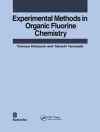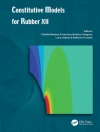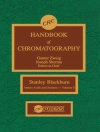Analytical methods are the essential enabling tools of the modern biosciences. This book presents a comprehensive introduction into these analytical methods, including their physical and chemical backgrounds, as well as a discussion of the strengths and weakness of each method. It covers all major techniques for the determination and experimental analysis of biological macromolecules, including proteins, carbohydrates, lipids and nucleic acids.
The presentation includes frequent cross-references in order to highlight the many connections between different techniques. The book provides a bird’s eye view of the entire subject and enables the reader to select the most appropriate method for any given bioanalytical challenge. This makes the book a handy resource for students and researchers in setting up and evaluating experimental research. The depth of the analysis and the comprehensive nature of the coverage mean that there is also a great deal of new material, even for experienced experimentalists.
The following techniques are covered in detail:
– Purification and determination of proteins
– Measuring enzymatic activity
– Microcalorimetry
– Immunoassays, affinity chromatography and other immunological methods
– Cross-linking, cleavage, and chemical modification of proteins
– Light microscopy, electron microscopy and atomic force microscopy
– Chromatographic and electrophoretic techniques
– Protein sequence and composition analysis
– Mass spectrometry methods
– Measuring protein-protein interactions
– Biosensors
– NMR and EPR of biomolecules
– Electron microscopy and X-ray structure analysis
– Carbohydrate and lipid analysis
– Analysis of posttranslational modifications
– Isolation and determination of nucleic acids
– DNA hybridization techniques
– Polymerase chain reaction techniques
– Protein sequence and composition analysis
– DNA sequence and epigenetic modification analysis
– Analysis of protein-nucleic acid interactions
– Analysis of sequence data
– Proteomics, metabolomics, peptidomics and toponomics
– Chemical biology
İçerik tablosu
Preface XV
Introduction XIX
Part I Protein Analytics 1
1 Protein Purification 3
2 Protein determination 23
3 Enzyme Activity Testing 35
4 Microcalorimetry 47
5 Immunological Techniques 63
6 Chemical Modification of Proteins and Protein Complexes 107
7 Spectroscopy 131
8 Light Microscopy Techniques – Imaging 181
9 Cleavage of Proteins 207
10 Chromatographic Separation Methods 219
11 Electrophoretic Techniques 243
12 Capillary Electrophoresis 275
13 Amino Acid Analysis 301
14 Protein Sequence Analysis 313
15 Mass Spectrometry 329
16 Protein–Protein Interactions 381
17 Biosensors 419
Part II 3D Structure Determination 431
18 Magnetic Resonance Spectroscopy of Biomolecules 433
19 Electron Microscopy 485
20 Atomic Force Microscopy 519
21 X-Ray Structure Analysis 529
Part III Peptides, Carbohydrates, and Lipids 553
22 Analytics of Synthetic Peptides 555
23 Carbohydrate Analysis 571
24 Lipid Analysis 613
25 Analysis of Post-translational Modifications: Phosphorylation and Acetylation of Proteins 645
Part IV Nucleic Acid Analytics 663
26 Isolation and Purification of Nucleic Acids 665
27 Analysis of Nucleic Acids 681
28 Techniques for the Hybridization and Detection of Nucleic Acids 719
29 Polymerase Chain Reaction 755
30 DNA Sequencing 785
31 Analysis of Epigenetic Modifications 817
32 Protein–Nucleic Acid Interactions 831
Part V Functional and Systems Analytics 873
33 Sequence Data Analysis 875
34 Analysis of Promoter Strength and Nascent RNA Synthesis 895
35 Fluorescent In Situ Hybridization in Molecular Cytogenetics 917
36 Physical and Genetic Mapping of Genomes 925
37 DNA-Microarray Technology 945
38 The Use of Oligonucleotides as Tools in Cell Biology 959
39 Proteome Analysis 977
40 Metabolomics and Peptidomics 1023
41 Interactomics – Systematic Protein–Protein Interactions 1033
42 Chemical Biology 1041
43 Toponome Analysis 1057
Appendix 1: Amino Acids and Posttranslational Modifications 1073
Appendix 2: Symbols and Abbreviations 1075
Appendix 3: Standard Amino Acids (three and one letter code) 1081
Appendix 4: Nucleic Acid Bases 1083
Index 1085
Yazar hakkında
Friedrich Lottspeich studied chemistry in Vienna and performed his dissertation at the Max-Planck Institute of Biochemistry in Munich. He received his Ph D in biochemistry from the University of Vienna. After habilitation in Munich and Innsbruck, Friedrich Lottspeich was head of the protein analytics group at the Max-Planck Institute of Biochemistry in Munich until his retirement in 2013. His research focused on the development and application of methods for the analysis of proteins. Friedrich Lottspeich is author of more than 750 original publications and is a former President of EUPA and DGPF. He received several international prizes such as the ASAC Pregl Medal 2009, the DGMS Award Mass spectrometry in Life Sciences 2012, the AUPA Life Achievement Award 2014 and the EUPA Juan Pablo Albar Proteomics Award 2016.
Joachim W. Engels studied chemistry in Berlin and Munich and received a Ph.D. in Regensburg. He carried out post-doctoral studies at Stanford, did his habilitation in Konstanz and was a visiting scientist at the University of Colorado before joining the company Hoechst in 1981, where he developed gene synthesis. He is a full Professor of Biological Chemistry at the Goethe-University of Frankfurt since 1985. His interests range from chemical biology to bioanalytics. Joachim Engels has served as president of the International Society of Nucleotides and Nucleic Acids (2005/6), held several guest professorships at Chiba Institute, Japan (1989), Hokkaido University, Japan (1998) Shandong University, China (2004), Cady-Ayyad University, Morocco (2010), University Witwatersrand, South Africa (2012). He has authored more than 300 original publications. On retirement, he was chosen Professor Emeritus and he is now President of the Goethe-Wissenschaftliche Gesellschaft (Academy) in Frankfurt.












